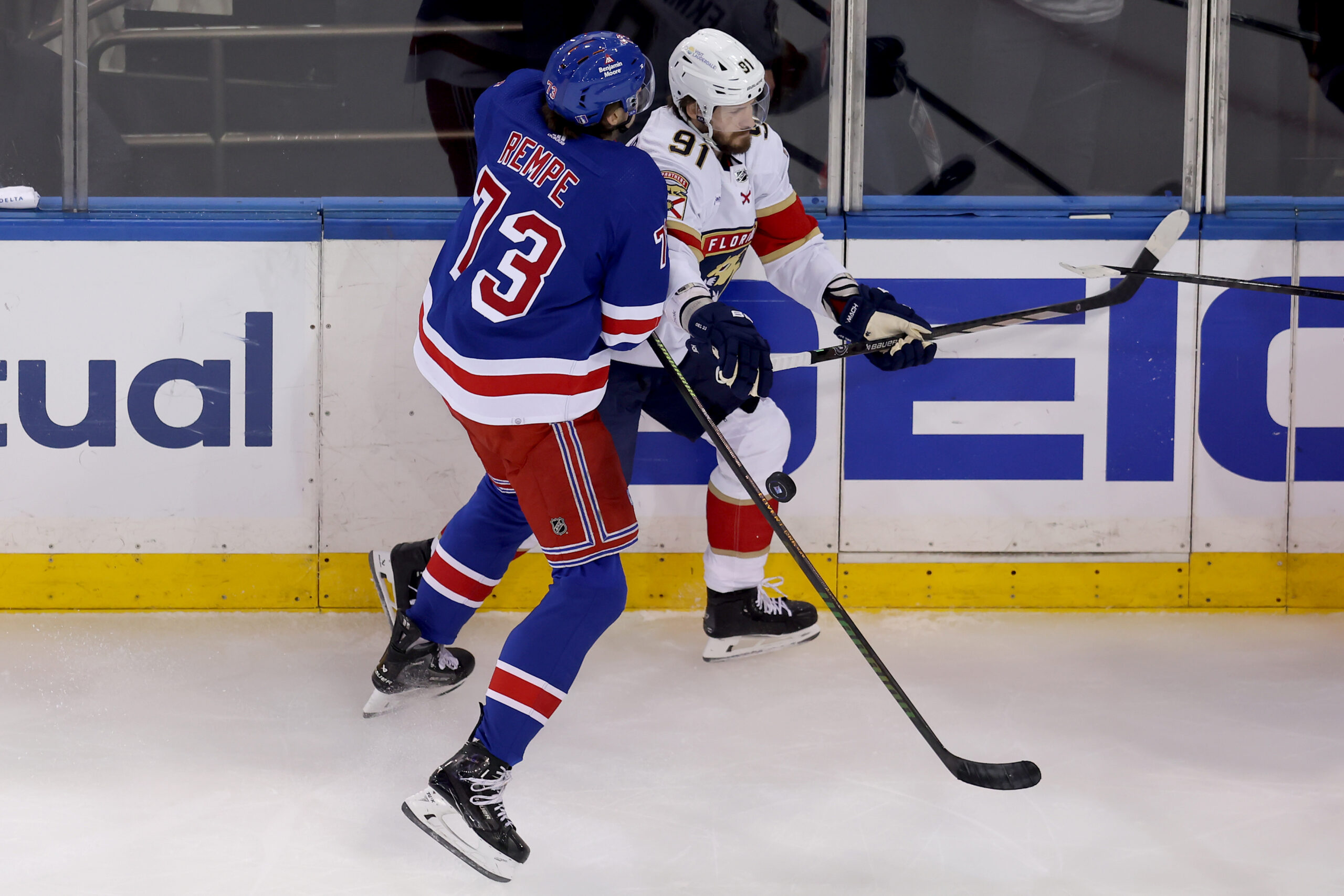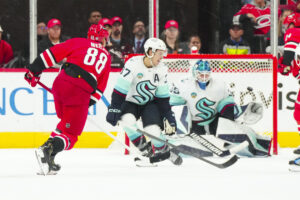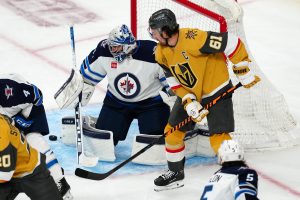The Rangers have jettisoned their “tough guy” acquisitions as, and now their internal quest for toughness begins. Will it work?
The New York Rangers have had a strange relationship with the concept of “toughness.” It’s a question that’s haunted the Rangers for some time. Ever since Tom Wilson and the Washington Capitals ragdolled Artemi Panarin, Pavel Buchnevich, and seemingly everyone else at the end of the 2018-19 NHL regular season, the Rangers have sought a permanent solution to their problem, for better or for worse.
Except, no solution has been permanent. Out goes Buchnevich, in comes Sammy Blais, and Ryan Reaves, and Barclay Goodrow, moves that didn’t age well but all orchestrated under the mandate of James Dolan who made his displeasure of the situation known league-wide. And now, not one of the aforementioned players remain. Blais returned to the St. Louis Blues, Reaves was sent to the Minnesota Wild for a 5th round draft pick, and Goodrow was unceremoniously banished to the wastes of the San Jose Sharks.
So where do the Rangers sit now in regards to toughness? Well, instead of looking elsewhere in the league to fill that quota, which would more often than not cost the Rangers more than it’s worth, Chris Drury and company have decided to look internally. It may work wonders.
Defining Toughness
It’s important to understand what “toughness” means in the context of the modern NHL game. Decades ago, toughness were the beaten and bruised faces of Chris “Knuckles” Nilan, Tie Domi, Bob Probort, Derek Boogard, and so on. Icons in the rock’em, sock’em era of the NHL that’s not for the faint of heart. But the game is no longer like that, and for good reason. Toughness, like the game, has evolved. To define by words what the modern understanding of “toughness” in the NHL is would be a difficult endeavor, so it’s important to take a look at some examples in the league that embody that modern quality of the word.
Look no further than the reigning Stanley Cup Champions, the Florida Panthers. The Rangers fan base remembers all too well the physical nature the Panthers brought as they bullied the Rangers up and down the ice in a six-game series victory. Matthew Tkachuk, Aleksander Barkov, Sam Bennett, Dmitry Kulikov, Niko Mikkola; the list seems never-ending! That roster shared a common strain of DNA that allowed the Panthers to understand where that line of fair and foul play was and how to cross it on occasion. Blessed with elite skill, unwavering determination, and fearlessness that sometimes bordered on recklessness, the Panthers stand as the paragon team of toughness.
Can the Rangers Build Something Similar?
This isn’t meant to be a fluff piece for the Panthers, but credit where credit is due. It’s been long understood that the NHL is a copy-cat league: what one team does successfully, others will try to imitate. The Panthers are so specifically constructed, however, it may prove difficult to replicate their makeup on a 1:1 scale. And that’s fine. The Rangers don’t need to, they just need to build closer in that direction.
And they might be doing that. Another understanding of the modern definition of “toughness” in the game isn’t necessarily sacrificing skill for it. Toughness, nowadays, incorporates a high level of skill along with a competitive drive. Thus, another South Florida summer for the Stanley Cup. The Rangers are starting to build towards something like that, even if it isn’t always pretty. Cutting ties with Goodrow was a shrewd and callous business move by Drury, but it was necessary. At his price point and production, the Rangers needed to be free of Goodrow albatross.
So how do they replace it? The first place to look is the NHL roster itself. Matt Rempe is big and skates like the wind and is a little bit reckless. That doesn’t mean he can’t develop into something more. His desire to be more than bone-crushing hits and suspensions is half the battle. The Rangers have a real weapon in him due to his physical presence. If he can play 60 games in 2024-25 and toe that line of discipline, he could have more of an impact than Reaves, Blais, and eventually even Goodrow ever did.
But surely toughness has to come from more than one man. It’s no secret that the Rangers’ playoff struggles started when the Carolina Hurricanes, in the Second Round, adapted to a more physical and aggressive play style. Some players (not to name names) wilted under that pressure. Others rose to the occasion. Chris Kreider, Vincent Trocheck, and Alexis Lafreniere come to mind and serve as perfect representatives of that crucial blend of skill and physicality reminiscent of the Florida model. But only three players of that mold is not enough; the Rangers may be hard-pressed to find the skill part of the equation, but there are plenty of options for the physicality and effort pillars of the team’s foundations.
Will Cuylle, Rempe, and Adam Edstrom were all contributors at the NHL level. Cuylle’s room for growth after a positive rookie campaign is as exciting as any prospect’s development. Edstrom showed a knack for the forecheck and grinding and puck battles along the half-wall. He has a legitimate shot for a fourth-line spot alongside Rempe. Two towering giants with the ability to skate and forecheck? Yes, please.
And then there’s the pipeline. Brennan Othmann and Brett Berard have shown a higher offensive skill set than Rempe and Edstrom, but do not lack in the tenacity. Much has been made about Othmann and his tenure in Juniors, but Berard was one of the Hartford Wolf Pack’s leading scorers. Both Othmann and Berard could see extended runs at the NHL level this year. On the defensive side, the drafting of E.J. Emery provides a reinforcement down the road to join the ranks that include Braden Schneider and K’Andre Miller and is led by the ever-elusive Adam Fox.
Conclusion
The Rangers failed to fill their toughness quota in a meaningful way. Free agency and trades, for the most part, didn’t work. Now they must look internally, where they are not short on options. This will be a benefit to the team in the long-run. The Rangers have a serious shot at filling out their bottom six with young, cost-controlled players.
By no means is this a foregone conclusion. The Rangers have the assets in place, but it’s still up to the players to go out and perform. If Matt Rempe can’t establish himself as a reliable bottom-six player, or if Will Cuylle doesn’t build off his promising rookie season, and Berard, Othmann, and Edstrom look out of place, then the Rangers will have to go back to the drawing board.
For now, the Rangers have begun their internal quest for toughness.
Whatever that word means.
Main Photo: Brad Penner-Imagn Images






